Welcome, everyone! Don’t really have all that much in the way of a preamble this week, I’m afraid, so we’ll dive right into things. And while I appreciate all of the questions, I am going to begin pulling back on just how many I answer every week, as it’s just beginning to take up way too much time to write this Newsletter every week otherwise. But every question is welcomed and valued nonetheless.
So with that said, let’s get into the thick of it:
Brandon Giles
The question about “destroying characters” brought up Beast’s heel turn during the Krakoa era and made me remember another heel turn that seemed rather strange to me when it happened: Phil Coulson joining Mephisto during Jason Aaron’s AVENGERS run. Do you remember why Coulson was chosen as the bad guy? As an editor, how do you know when a heel turn (or a face turn) will work for a character and when it might be better to leave them where they are?
Well, Brandon, the truth is that Phil Coulson was at that point dead, having perished during SECRET EMPIRE. So Jason picking up on him from that status quo given that he was going to function as a tool of Mephisto’s made a lot of sense. Plus, it was Jason Aaron, whom I think has a good track record of treating characters well for the most part. I certainly trusted him to do so, and figured that I was in a position to say something if I thought he was taking anything too far. But that never became necessary. As I said before, in order to keep things interesting for the audience, you need to be willing to smash up the toys a bit from time to time.
Alison Cabot
Is Namor still considered a mutant? If so, can we expect him to interact with the core X-Men in this new era?
Namor is and always will be a mutant, Alison, but he’s in prison following the end of Jason Aaron’s run of AVENGERS, where he turned himself in for his crimes against humanity. We’ll be picking up on this situation in the upcoming NAMOR series that Jason is doing with artists Paul Davidson and Alex Lins, but it’s going to be more about laying out a cosmology for the assorted undersea realms than dealing with anything particularly mutant-related.
Zach Rabiroff
when the X-Men play their favored team sport, is it underhand softball, or overhand baseball? Your answers will henceforth be considered canon.
Given the fact that powers often come into play, I have to imagine that the X-Men play overhand baseball, Zach. That said, on the splash page of their first game in UNCANNY X-MEN #110, Nightcrawler does look as though he’s pitching underhand.
Jeff Ryan
was there ever any talk of showing how Covid affected the Marvel universe? Would an individual title have been allowed to introduce a Covid storyline?
The problem with dealing with Covid in our comics, Jeff, was that it very quickly became apparent that this was a situation that was going to last for a long time, and with no assurances that everything was going to turn out all right. And as soon as you do one story that establishes Covid in force, you thereafter need to reflect it across the entire line—which means everybody sheltering in place and abandoned streets, and not the sort of storytelling that people likely want to read about if they’re in the midst of living it themselves. Who wants to see Peter Parker hesitate to go after the Scorpion or somebody because he’s afraid that he may catch Covid and infect the Daily Bugle with it? So we made the choice to wait and see how the situation developed over time, and then we could backfill as needed if there were Covid-related stories that people wanted to tell.
Tobias Carroll
do you see any parallels between editing the Avengers titles in the aftermath of Secret Wars and editing the X-books in the aftermath of Krakoa? And if so, is there anything you learned from the former that you've applied to the latter?
Not really, no, Tobias. To me, editing AVENGERS after SECRET WARS was really no different than editing it before. There’s a bit more of a sea change with X-MEN in that there’s a clear demarcation of the status quo from one era to the other. Even if a reader is unaware of the editorial shift, they’re going to see that.
JV
I don't even mean actual sales numbers but I remember when Marvel Age would publish a top ten marvel sellers list so we knew what the top books were (without copies specified). Would Marvel do this again?
I don’t know that we would in a vacuum, without a good reason, JV. I don’t know that it’s anything that anybody among the general public needs to know.
Ray Cornwall
My girlfriend and I were talking about Krakoa- I'm doing a big Krakoa Marvel Unlimited reread to prepare for you taking over the books. And she asked me, "So if Peter Parker had a kid, would that kid be a mutant?"
And I said, "No, I don't think so, because in the other realities when Peter had a kid, the kid had powers but wasn't a mutant. Since the powers aren't really different from the parents, it's not really a mutation."
And she said, "But what about Cyclops and Jean Grey? Cable's powers aren't the same as theirs. But he's a mutant."
And then I realized- how does that work? When a kid of superpowered parents has powers, when do we consider the kid a mutant? I know the "real" answer- whatever makes for a better story (ala the changes in Franklin Richard over the last few years), but what's the criteria in Earth 616 in storyline?
Over the years, Ray, being a mutant in the Marvel Universe has been defined as possessing the X-gene that allows for all sorts of ridiculous and crazy powers. So if Spidey’s child inherited his abilities but didn’t have the X-gene, then they wouldn’t be a mutant. But if they did have it, then they would.
Geoff Cuddy
odd question, but every column there seems to be always at least one "the" spelled "teh". I've gamified the reading of your column to include finding all the teh, which makes me smile (and WIN!). And I keep wondering if they're intentional for some reason, or just the misspelling that never gets corrected.
It’s just a side effect of getting old, Geoff. As I type quickly, my fingers over the years have often begun to strike some of the keys in the wrong order. I try to catch as much of it as I go as I’m able to, but this Newsletter is already a ton of work every week, so there’s only so much proofreading that I’m about to do on it. As always, you get what you pay for. So you’ll just have to put up with my erratic typing.
Cameron Chittock
You mentioned how a few of the upcoming X writers have different approaches to social media. Is social media presence (or "influence") something Marvel editorial factors in when casting or considering potential writers?
No, not really, Cameron. I’m looking for writers who can bring something to the page and to the stories, nothing else. And honestly, I haven’t seen any real evidence that having a strong social media profile necessarily equates to great sales—or the reverse, either.
Tho mas
Please tell me you and your team have a plan in place in your future stories to counter it and show that the broken bath scene is not what we think it is. Because i know you and your team have both the talent/creative skills to pull it off plus also i want to believe in your interpretation of the whole thing. Seeing in comics evidence(whether in the main books or in the infinity comics) solidifying your point of view going forward would be nice.
This conversation has been going on for a couple weeks now, Tho, so I’m hopeful that this will be the last word on it for the moment, though I fear that it won’t. But I’m not going to waste one iota of storytelling space on re-litigating stories from years ago. I don’t feel any need to do some sort of reversal to Ben’s scene from that X-FORCE issue after so much time has passed. The number of people for whom that’s relevant is small and scant. it isn’t keeping most readers up at night. Rather, we’ll simply move ahead into the future. If there’s some future point where some writer wants to address it and it feels like a natural part of the story, then fine. But my job isn’t to “fix” earlier stories, it’s to tell new ones, so that’s where the emphasis will be.
Cian McDarby
Beast has had… a wild two decades. From pretending to be gay in Morrison’s New X-Men to basically violating every individual section of the Geneva Convention in X-Force. His slow moral decline has been an incredible sight, where a collection of writers’ individual decisions, with stuff such as pulling the O5 from the past to “teach Scott a lesson” and other moments of moral slippage creating a saga of a man who simply cannot stop going lower.
My questions are how do you feel about this seemingly accidental saga? Do you have any specific thoughts on Beast’s long term morality issues? Am I completely mislead here and this was actually on some level intentional through all the writers and editors that had the line?
And also, to face the future: Will current Beast, who’s been pulled out from his Avengers days with Wonder Man, have to deal with the sins his Future/Past self committed but that he himself is arguably innocent of? Personally I hope so, as I feel it has to be fertile ground for great story stuff.
It was intentional, Cian, in so far as those creators who were involved with those stories chose to make those decisions, whether they felt they were building on earlier work or not. And now, today, they are a fact. So they’ll come along with the character as he moves forward, and they’ll come up with and if they are relevant to what is going on with him today. Certainly Jed MacKay hasn’t overlooked any of this in terms of his handling of Henry in X-MEN.
Yoyo
are there any plans for scott and jean to have their own baby (same universe kids not alternate universe kids or kids with clones) ?
No plans for that at the moment, Yoyo. In general, I think that’s it’s usually a bad idea for super heroes to have kids. If nothing else, it ages them and makes them feel more like, well, your parents rather than you. So I’m never in a real rush to give anybody more children.
Steve McSheffrey
Where do you stand with making Quicksilver and Scarlet Witch Magneto's kids again? It was an exciting move back when it happened but the go to stories around the twins always seemed to revolve around Daddy issues. Worse, Petro went from being a jerk like Hawkeye to somehow always being doomed to break bad like his father. Like the Pym Slap, every time someone one writer cleared the decks and made Pietro unabashedly good, soon another writer would lazily go there again.
(BTW, my secret wish is we find out Pym was replaced by a Skrull before the Slap since no writer's efforts to redeem Pym or move past one of only two Big Events in his publishing history have always failed)
I have the same stance on a lot of these issues, Steve: leave the ball where it lays. Having done convoluted stories to separate Wanda and Pietro’s backstories from Magneto’s, I don’t know that it serves anybody to try to do another convoluted story to attempt to put that back the other way again. It is what it is, now we move on. The same goes for Lorna Dane being Magneto’s daughter, and Franklin Richards not being a mutant, or Cloak & Dagger. Wherever you go, there you are—so we’ll move ahead without a need to try to overturn the board again in an attempt to recapture something that wasn’t even all that important to the characters on a story-by-story basis in the first place for the most part.
And there were people who hoped to reveal that Hank had been a Skrull for that long, the problem there being that I don’t believe that you can tell the audience that the past 40 years of stories featuring the character that they read weren’t about him. They’re simply not going to go along with you on that. Plus, Hank’s action was so visceral and so relatable for so many readers that trying to scrub him of responsibility for his actions never takes. The audience as a whole isn’t willing to buy that it was Kang’s mental influence over him or whatever—and I don’t think they’d buy the Skrull defense either. (It also doesn’t help that modern audiences tend to conflate MU Hank with Ultimate Hank, who was far more an aggressive abuser. But you can’t reason yourself out of the way people feel.)
Joel Zorba
A few years ago you talked about the characters' ages. So what would be the current age of the characters, considering there are at least six or seven generations of new mutants nowadays. So, what would be the current age of Xavier, Magneto, the original five X-Men, Storm, Kurt, Kitty, Emma, Rogue, Gambit, Betsy, also Morrison's new X-Men, the 2000s new X-Men, the Bendis' new X-Men...
I think trying to nail this stuff down is almost always a mistake, Joel, and one that just causes arguments among the fan base. So i think it’s to be avoided. But speaking in generalities, the contemporary Marvel Universe has been around for about 15 years give-or-take. That is to say, the Fantastic Four’s origin always happened about 15 years ago regardless of what year it happens to be. Of the characters you list, Magneto is by far the oldest, almost double the age of anybody else because his origin has been inexorably linked to a historic event, the Concentration Camps of WWII, and so he had to have been born in the 1930s. At the beginning of the MU, Spider-Man, the Human Torch, Cyclops and Angel were all the same age, and that remains a constant. Iceman was slightly younger, the Beast slightly older. And everybody who came after them, such as Kitty or Storm, need to remain relatively behind them. But what you’re really asking is how can we possibly fit so many stories into such a limited space? And the answer is that it’s fiction, so we can do whatever the hell we like provided that the readership goes along with it. There’s a tendency among readers to expect the characters to age along with them, which is what leads to people thinking that Cyclops is 45 years old or something. But that’s just not the way it works.
Behind the Curtain
.What you see below are a pair of doodles that I did one day circa 2009 on a pair of these sketch boards that we had printed up so that artists could do custom sketches at conventions. I expect that I must have been working on something like the AVENGERS: THE ORIGIN limited series that was focused on the original Avengers, and which would have inspired these pieces.
No idea why I did them, apart from for fun. They never got used for anything in particular.
Pimp My Wednesday
We don’t have any new titles on that this week, as it turns out. Part of the reason for that is that last week we put out a ton of new releases. But of course, Covid kept me from really plugging them. So just to keep the record complete, here’s what they were—still available at finer comic shops near you:
A Comic Book On Sale 85 Years Ago Today, June 15, 1939
When you think about it, it really is sort of amazing that a good portion of the comic book industry continues to be driven by ideas that were created 60, 70, 80 years or more ago, and which were considered throw-away thoughts at the time. This week, we spotlight two of those, both of which were derived from the same inspirational source. So 85 years ago, ADVENTURE COMICS #40 debuted a new cover-featured character, the Sandman. Actually, there’s some evidence that the Sandman appeared first in the 1940 NEW YORK WORLD’S FAIR COMICS issue, but this was his first appearance in his regular home. As costumed crime-fighters became the hot fad, DC in particular worked to position a different Superman in every one of its anthology series, the better to ensure sales. The Sandman was the creation of writer Gardner Fox and artist Bert Christman, who lost his life during WWII. The Sandman was playboy Wesley Dodds, who donned a green suit, a cape and a gasmask and ran around solving murders and stirring up the underworld. He was clearly derived from the popular radio hero of the era, the Green Hornet, although the Sandman didn’t pose as a criminal as the Hornet did, nor did he have a valet. But he did have a gas gun like the Hornet, and he did otherwise attire himself in natty clothes. Everybody was looking for the next hot thing in super heroes, and so everybody was ripping off anything that was popular. Despite the fact that he was sort of plain, and the quality of the artwork on his strip declined once Christman went into the service, the Sandman proved to have remarkable longevity. After a certain point, he traded in his gas gun and mask for a typical super hero leotard, switched to carrying a “wirepoon” that let him swing around the city, and picked up a kid sidekick, Sandy. The real secret to his long run, though, was that at about this time Joe Simon and Jack Kirby took over producing his adventures, and so the character became a lot more kinetic and thematically interesting, with many adventures revolving around dream imagery of one sort or another. The strip ended in 1946, but the character made a comeback twenty years later along with his partners in the Justice Society of America, and he’s been on the scene to one extend or another ever since. Heck, just last hear, he headlined a new six-issue limited series set in that 1940s period. It shows that there was something primeval in those original characters, some thread beyond just simple nostalgia that allowed them to stand the test of time. Bert Christman is long gone, but through his creation, he may live on for untold years to come.
Another Comic Book On Sale 85 Years Ago Today, June 15, 1939
At the same time, Victor Fox’s MYSTERY MEN COMICS #1 was introducing another character who was derived from the same source, radio’s Green Hornet. This was the Blue Beetle—Fox really wasn’t being subtle about what he was doing here. There’s been some debate over the years, but the consensus today appears to be that Chuck Wojtkoski created the character, if you can really call it creating. In his first appearance, the Blue Beetle wore a mask under a hat and topcoat and he pretended to be a criminal in order to better infiltrate the underworld. He didn’t have a valet, but as a low-rent knock-off, he probably couldn’t afford one. There wasn’t much to him, he was a mid-book filler strip in his first appearance. But somebody must have liked him, because in the next issue his strip was completely retooled. He suddenly gained a costume, a blue chainmail affair, and some genuine super-powers that came to him via special pills that he’d pick up from a druggist confederate. He was Dan Garret, rookie police officer by day, and the crime-busting Blue Beetle by night. Fox even attempted to get him on the airwaves in a short-lived radio series, which didn’t last long. Victor Fox was an interesting character, one of the great fly-by-night operators in the comic book field. His books always had great covers and lousy insides, but he had big dreams and penny-pinching instincts, and he could squeeze a nickel and have a penny or two pop out. He’d walk among the bullpen of his artists, proclaiming himself the King of the Comics. Decades later, when he was given the nickname King by Stan Lee, Jack Kirby didn’t like it—it brought back memories of Fox for him, in whose employ he got his start. Over the years, ownership and control of the Blue Beetle character passed from outfit to outfit, often on the shakiest of grounds. Eventually, they wound up in the hands of Charlton, another low-rent outfit, who would publish the character on and off for years before eventually selling him to DC. And like the Sandman, he’s still a going concern today, with talk of a new animated series on the horizon, and a film in the recent rear view mirror.
A Comic I Worked On That Came Out On This Date
The third issue of the GLA limited series came out on June 15, 2005. It was produced by Dan Slott and Paul Pelletier, who had recently worked together on SHE-HULK, and it was another project that helped to put Slott on the map. It was a good if meta series that mixed comedy and drama in equal measure. But the big thing that it did, its lasting claim to fame, was in making Squirrel Girl a viable character in the Marvel Universe. Prior to GLA, the character had made one appearance, in an issue of MARVEL SUPER-HEROES almost a decade earlier. That book was designed to burn off unused inventory, and its Iron Man tale by Will Murray and Steve Ditko in which the armored avenger met the wacky Squirrel Girl and the two went on to defeat Doctor Doom became such a flashpoint that a bit of a legend grew up around Squirrel Girl despite her limited repertoire. To put it bluntly, there were people in Marvel editorial in the 1990s who hated that story and hated the character with a passion. So Squirrel Girl would turn up as the butt of jokes on Bullpen pages or in the MARVEL YEAR IN REVIEW satire magazine as the butt of a joke. Slott, though, saw some potential in her, and he turned the game around by steering into the very aspects of the character that had given everybody conniptions. Rather than attempting to explain away Squirrel Girl’s defeat of Doctor Doom, Slott instead decided that would be her shtick: she could defeat anybody. That combined with her earnestness and cheerfulness, and her representation as the avatar of a kinder, gentler era of super hero storytelling garnered her fans. Slott and Pelletier didn’t do it alone, certainly other folks such as Brian Bendis who brought Squirrel Girl in as Luke cage and Jessica Jones’ nanny helped to raise her profile. But Brian wouldn’t have chosen her had her profile not been raised among fans thanks to her GLA appearances. Still, it was really Ryan North and Erica Henderson along with editor Wil Moss who made Doreen Green a superstar in their long-running UNBEATABLE SQUIRREL GIRL series.
The Deathlok Chronicles
After skipping last week’s installment, let’s get right back into things—starting with some comments from DEATHLOK co-writer Gregory Wright:
Gregory Wright
I vividly remember the samples you showed me from Walter. They were really awesome and exactly the sort of stuff that the fans were going crazy for. The thing is...the were INKED...inked by a guy name Richard Bennett who knew exactly how to make sense of Walter's pencils...which neither of us knew was going to be an issue. Walter had begged me to beg you to get Bennett to ink the book...but I didn't think two new guys was the great play. No idea if he begged you or not. Mike was indeed furious and gave me an earful about how terrible the new artist was...and how even if he wasn't angry about not getting the book, he wouldn't ink this art...not being an inker or a penciller I wasn't quite sure what it was about his work that Mike detested so much. I had THOUGHT that my next story arc..actually the story arc that was SUPPOSED to be my first story arc would be the debut of our new artist. So when this one -off crossover issue came about I was...pissed. Now, I had wound up doing 5 issues instead of the agreed upon 4 in my first set of stories, so it was only fair that Dwayne did 5...which he had with his "fill in" issue that was really very good drawn by Denys, and his 4 issue story arc with Kelley's Brain where Deathlok goes home to play cyborg daddy. This made it 6. Within the first year and a half of the book, Dwayne had written 10 issues to my 5 and I felt like I was the fill-in guy who had to write around whatever Dwayne was doing. This was not true, of course, but it FELT that way. I don't recall why this happened other than I had written the annual, or there was a sense of fairnesss for a crossover...I had gotten the Punisher and Ghost Rider and maybe this was a payday...I'm clueless. And I know it was never personal...just more of the strangeness regarding being on Deathlok. Now...I didn't color the issue and I don’t know why...I almost sort of remember not knowing anything about this issue until it was in process. Jimmy Palmiotti gave me a call to ask about the artwork...he wasn't thrilled with it...and I didn't know there was another issue before my story arc...all very peculiar. When I SAW the issue...likely in BW...I’m sure you sent it to me...I was bewildered. It had all the big impressive panels that we hired him for but...they didn't look quite right. Some awkward stuff...some completely ignored storytelling...the detailed rendering the samples had was missing and things had that quickly done coloring book look...I started understanding what Jimmy was talking about...but I figured...the stuff really IS dynamic...it IS what we were talking about...I'll talk to him...I'll write my story in a manner that will address this stuff I don't like except...I'd already written couple issues... Now separate from this new art...this is the most UN DWAYNE McDUFFIE story ever. Maybe it was the art. I dunno. But right away I see Dwayne has a second sort of evil version of Deathlok...and my next story arc was going to have the more vicious JOHN KELLY version of Deathlok competing for the cyborg body inside Michael's head. I became REALLY concerned that my entire next story arc was never going to be taken seriously because it might look like I'm duplicating the evil Deathlok Dwayne just did and using John Kelly, like Dwayne just did, when my entire intent was to do my John Kelly story FIRST. Plus, now I have to contend with the new continuity of Michael's family being connected to him and his wife being pregnant. I don't remember if I vented about this at the time or if I just focused on my story. With everything in mind I was determined to write a story that would NOT be a fill-in arc, that would connect to everything done previously and put this book on a track for more success. And I was certain that Walter's art was going to propel the book in a positive direction...CERTAIN.
I haven’t seen those samples in 30 years or more, and I have no memory of them being inked by Richard Bennett, but that explains a lot. Bennett was a strong inker who brought a lot of his own style to anything that he worked on and who was incredibly commercial at that time. I’d be willing to bet that as much as anything, it was Bennett’s work that we were responding to more than Walter’s. What a bunch of chumps we were! I don’t recall Walter ever asking me to get Richard to ink the book, but it’s possible that he did. I’m not sure why Dwayne did the INFINITY WAR tie-in issue, though the fact that you wrote the Annual may be exactly right. We were trying really hard to keep everything fair and balanced, another wire-walk that had to be done on this series.
The big thing to talk about as far as DEATHLOK #17 goes is the cover, provided by Jae Lee. And the reason is that for a hot minute, Jae was going to be our new artist on the book. Before I had hired Walter, we found Jae and offered him the series—again, without any road-testing, which is crazy. But it turned out that Terry Kavanaugh had also seen Jae’s samples, and he was looking for a new artist to work with John Byrne on NAMOR. Jae correctly sussed out that that was a much better gig to take on, and so he said his goodbyes. The way that the rest of this run played out might have been very different had he been the new incoming artist.
As Greg says above, this was his return to the title after a six-month absence, and the kickoff to a five-part story that, frankly, probably should have been an issue shorter. I suspect that it outstayed its welcome, especially given its similarity with other recent stories as Greg points out above. The thrust of the story was twofold: first off, it dealt with John Kelly, the soldier whose body had been repurposed into the Deathlok cyborg before its onboard computer electrocuted his brain for failing to follow orders. Here, it’s revealed that an echo of Kelly’s mind still exists within Deathlok’s cybernetic architecture, and wrestles with Michael Collins for control of the cyborg. The other prong of the story was the ongoing search for Collins’ human body. It had been established that it was out there somewhere, and if Collins could get it back, then maybe his brain could be re-implanted into it and he’d be whole again.
New artist Walter McDaniel was working hard and his pages were improving somewhat, but it was clear that we were working within some very severe limitations. In all honesty, he wasn’t ready for this assignment, and once I’d worked that out, I should have taken him off of it. But I didn’t have a viable replacement to go to and I was determined to prove that my judgment hadn’t been faulty. So I kept riding that same inexperienced horse, hoping to get it to turn the corner.
Monofocus
I read a wonderful graphic novel this past week, ALWAYS NEVER by French creator Jordi Lafebre. It’s a love story told in reverse, with the opening chapter revealing the resolution and each successive chapter peeling back the history of the couple in question throughout the years, all the way back to their first meeting on the final page. The artwork is exceptionally great, with a Disney-style flair for gesture and body language and expression. Masterful. Also super-sharp is the color work, which is an integrated part of the storytelling. This is a beautiful book from front to back. My only complaint, such as it is, is that the font size on the translated text is just a hair too small for my aged eyes—i wish it was a point size larger. But apart from that, the work is fabulous and highly recommended. It’s a terrific volume, and has me seeking out Lafebre’s other works, most of which are sadly not available in English.
I also watched the film MOBILE SUIT GUNDAM SEED FREEDOM, the long-after second sequel to the television series MOBILE SUIT GUNDAM SEED. The show and its sequel MOBILE SUIT GUNDAM SEED DESTINY wrapped up almost twenty years ago, so this was a follow-up that I never expected to get. And as a story in and of itself, it’s a bit lacking. But watching SEED and DESTINY on a weekly basis was often like watching a soap opera, and so i was able to key back in emotionally right where I had left off, despite the passage of time, and that made all the difference. In particular, I was pleasantly surprised to see Shinn Asuka get such a meaty role. He was intended to be the protagonist of DESTINY, but by the middle of that series, it had become apparent that the audience cared more about the original characters, an so he took a heel turn. But here, he’s probably more central than the usual second lead Athrun Zala. It took me a bit to remember who all of the players were—the film doesn’t do any hand-holding and expects you to know all of this stuff already, which is a big flaw. But as a big ol’ dose of nostalgia, I liked it. Can’t really recommend it to those unfamiliar with the material, though. But what the hell, here’s the trailer.
Also, I tried to watch STAR WARS: THE ACOLYTE but found myself dozing off midway through the first episode. I kind of feel like STAR WARS has had a central problem that it hasn’t mastered ever since the end of the original trilogy. Which is to say that the conflict throughout the first three films is a small ragtag group of freedom fighters attempting to overthrow a monolithic military Empire. And they succeed. And the problem is, nobody’s ever decided what happens next. Instead, there’s a constant push towards trying to recreate the original conditions, either by inventing new Empires to overcome (The First Order) or by setting stories in the past when the Empire was still a thing, or even earlier, so that we’re dealing with the conflict that caused the Empire to rise in the first place. What’s truly needed here is a new direction forward, some new conflict that resonates in the manner that the original did but which isn’t just the same thing. I don’t know what that is, but until somebody finds it, I think STAR WARS as a property is going to be operating at half strength.
Posted at TomBrevoort.com
Yesterday, I wrote about the first half of the DOCTOR WHO season finale.
Five years ago, I completed an analysis of the Narrative Techniques of Jack Kirby.
And ten years ago, I reposted this 15 year old piece about an obscure issue of CRIME DETECTIVE COMICS that has a memorable cover.
That’s gonna do it for this one, folks! Stay healthy and be well!
Hat’s All, Folks!
Tom B

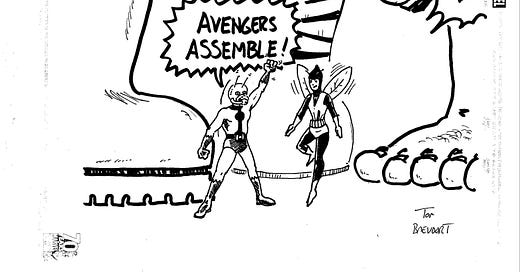



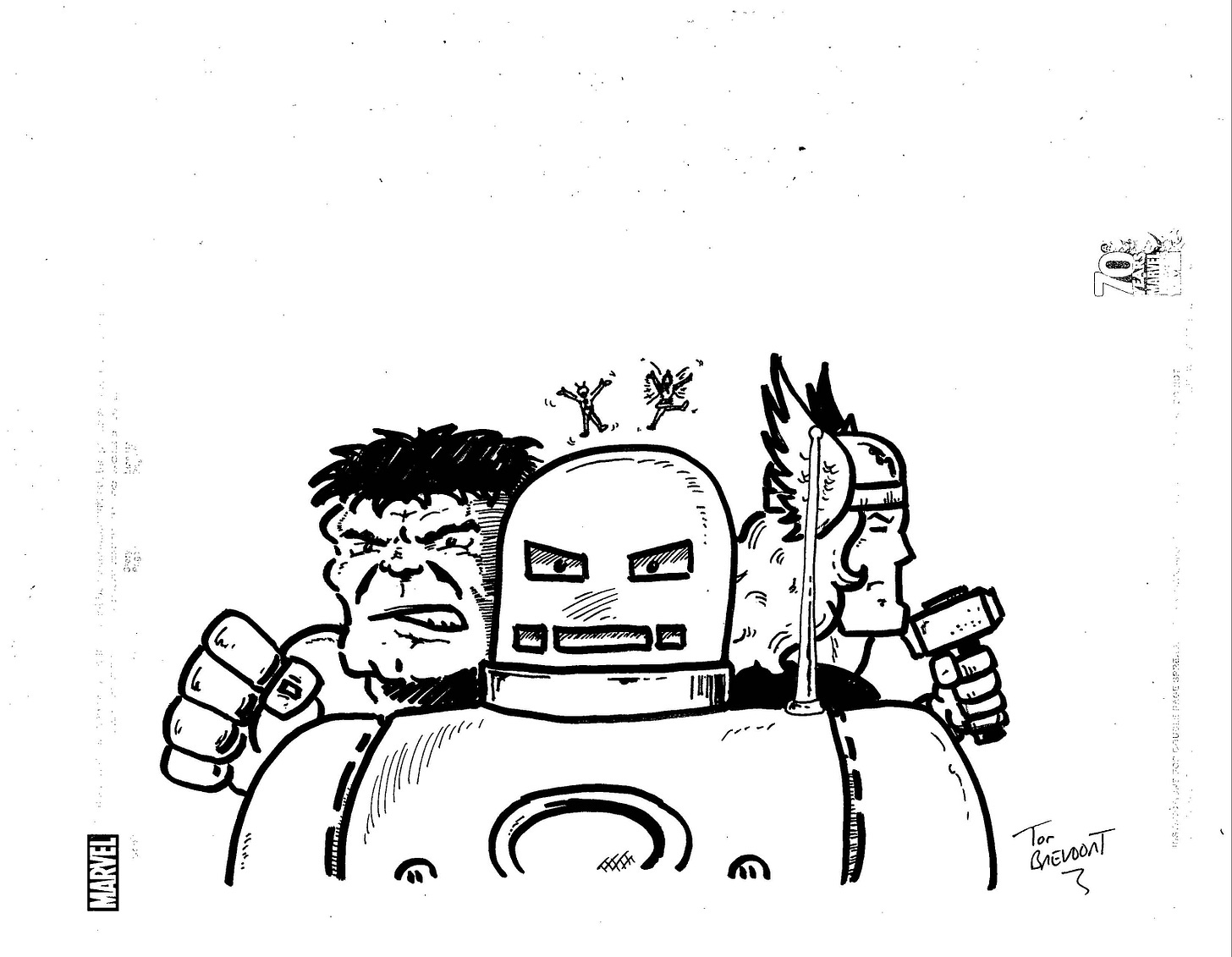
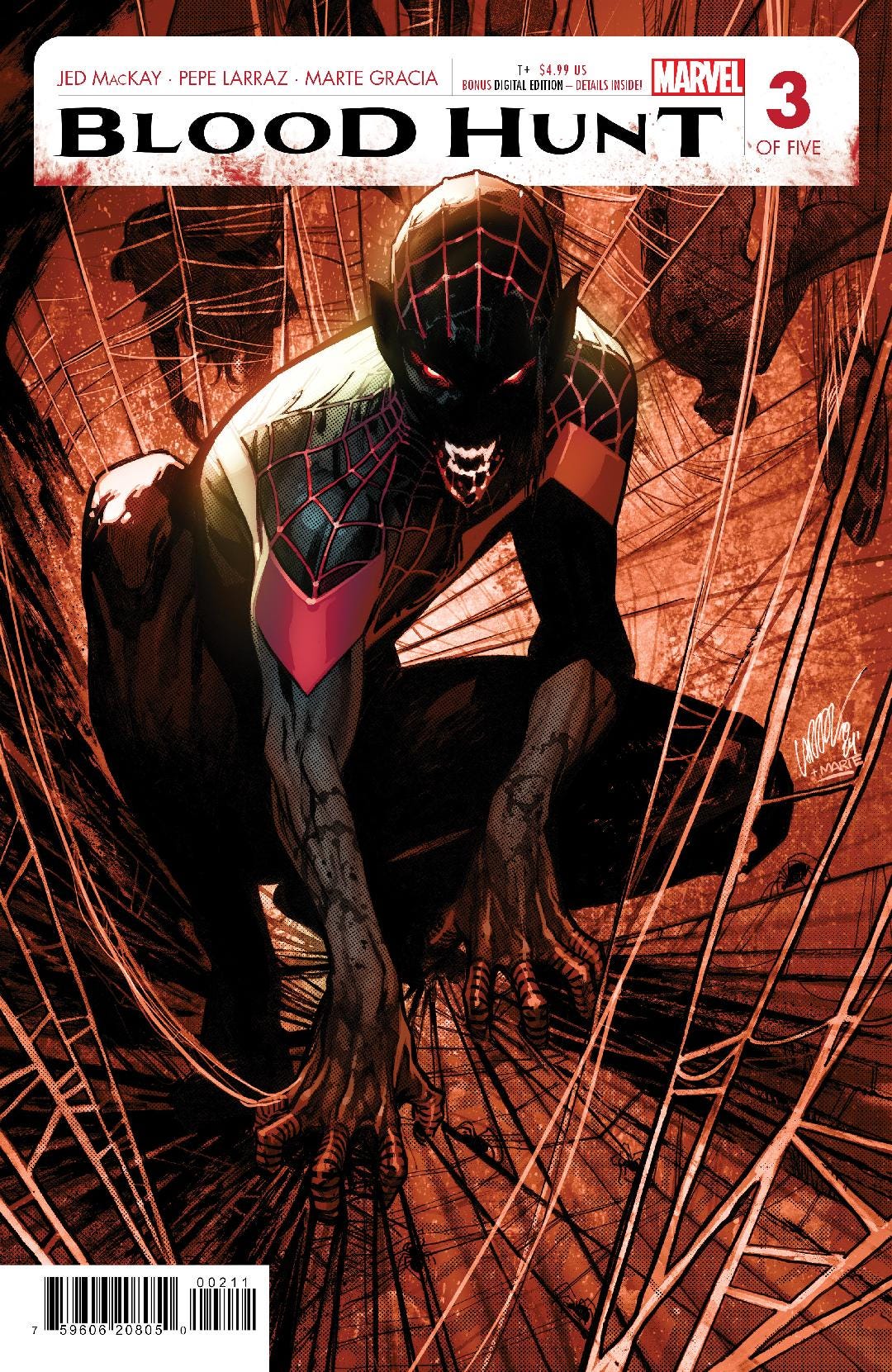
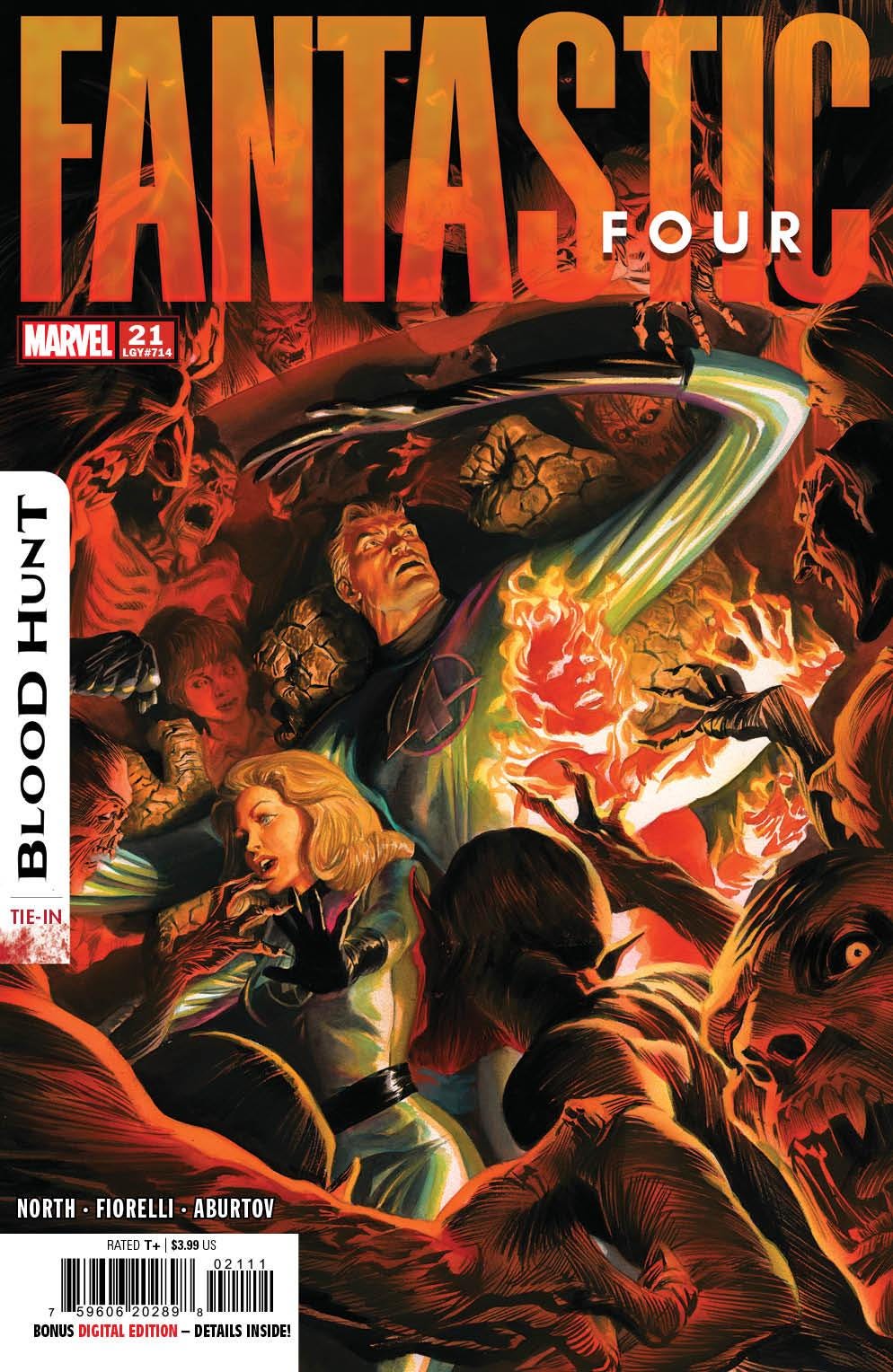
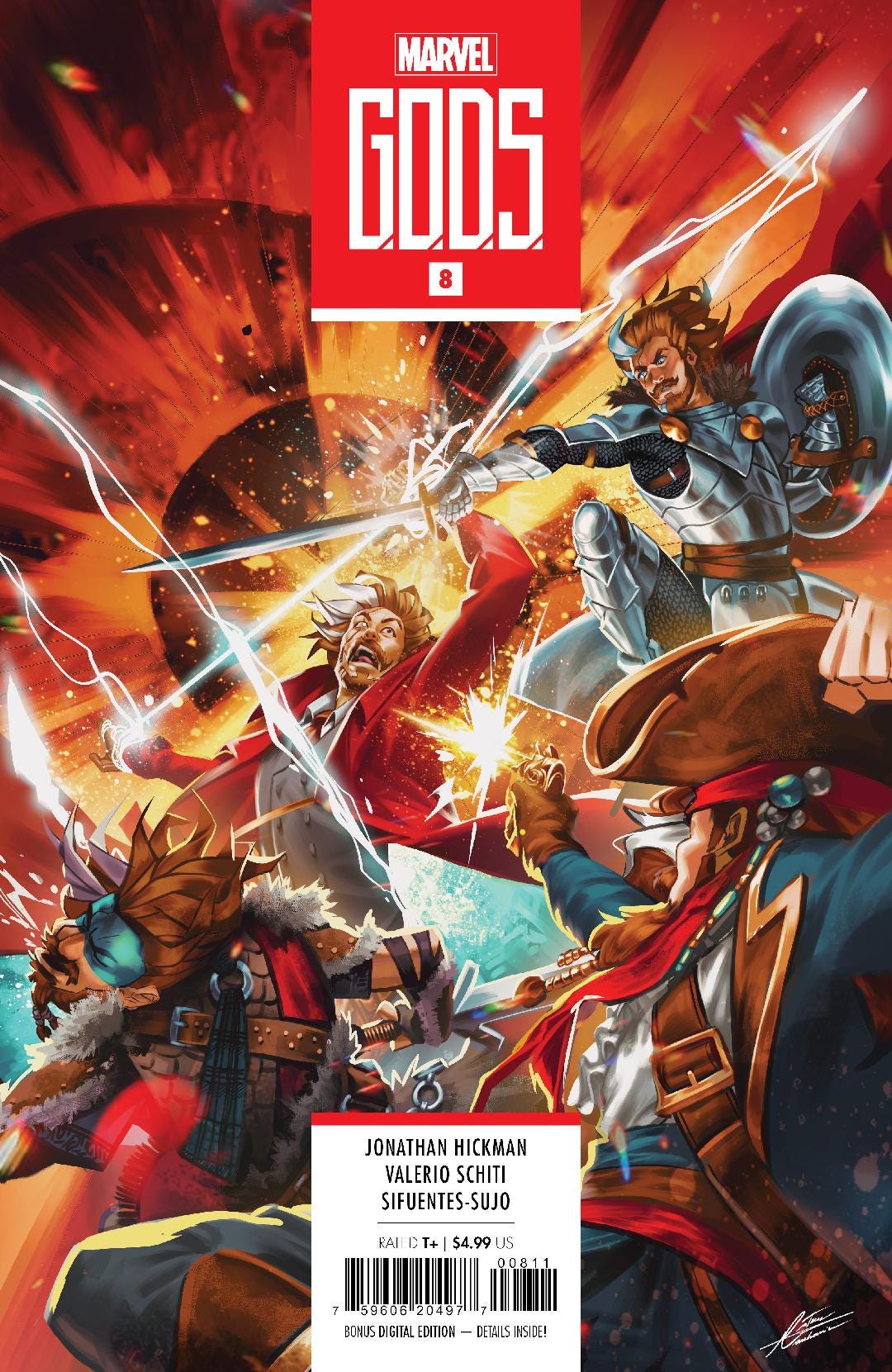
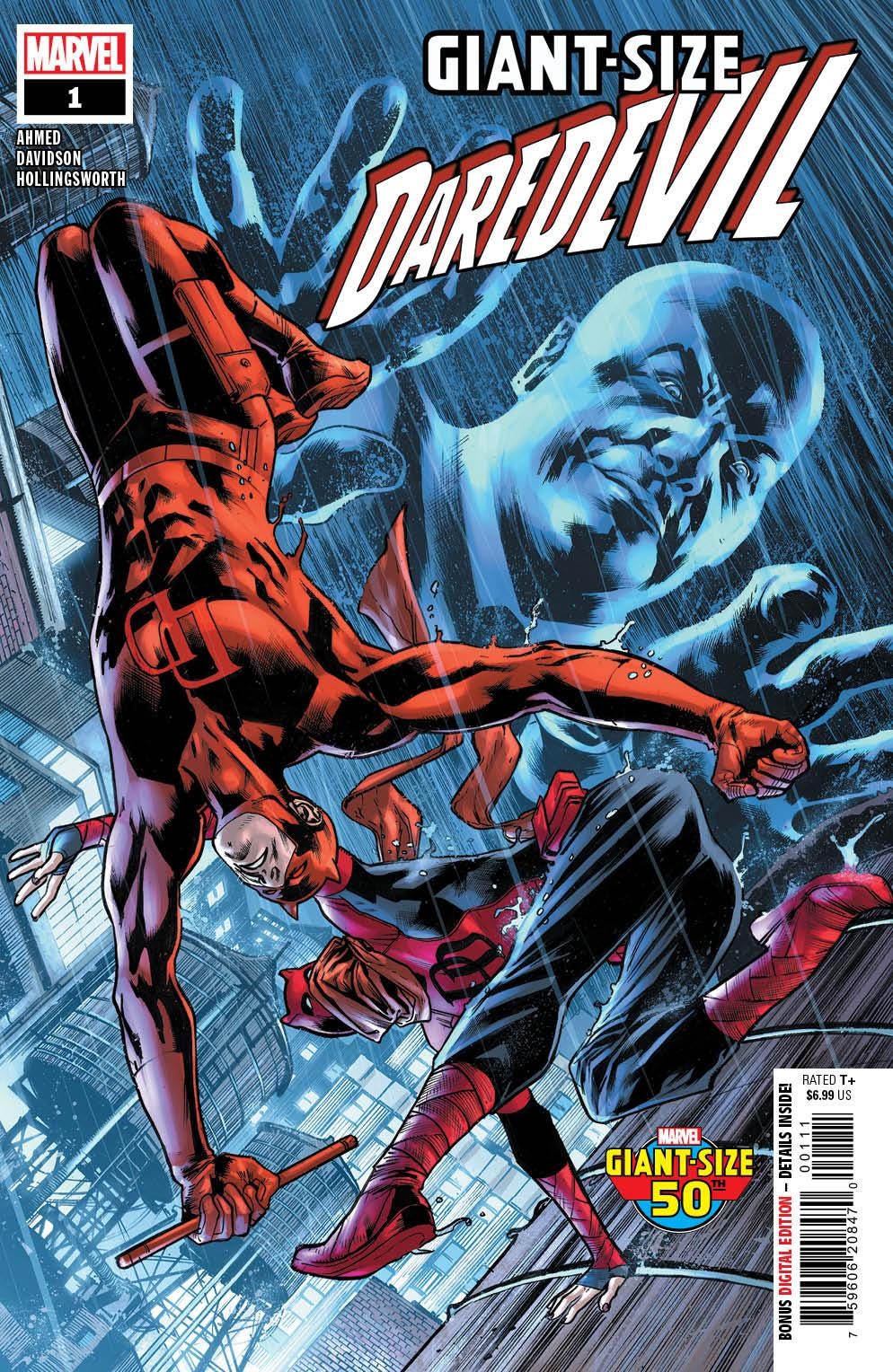
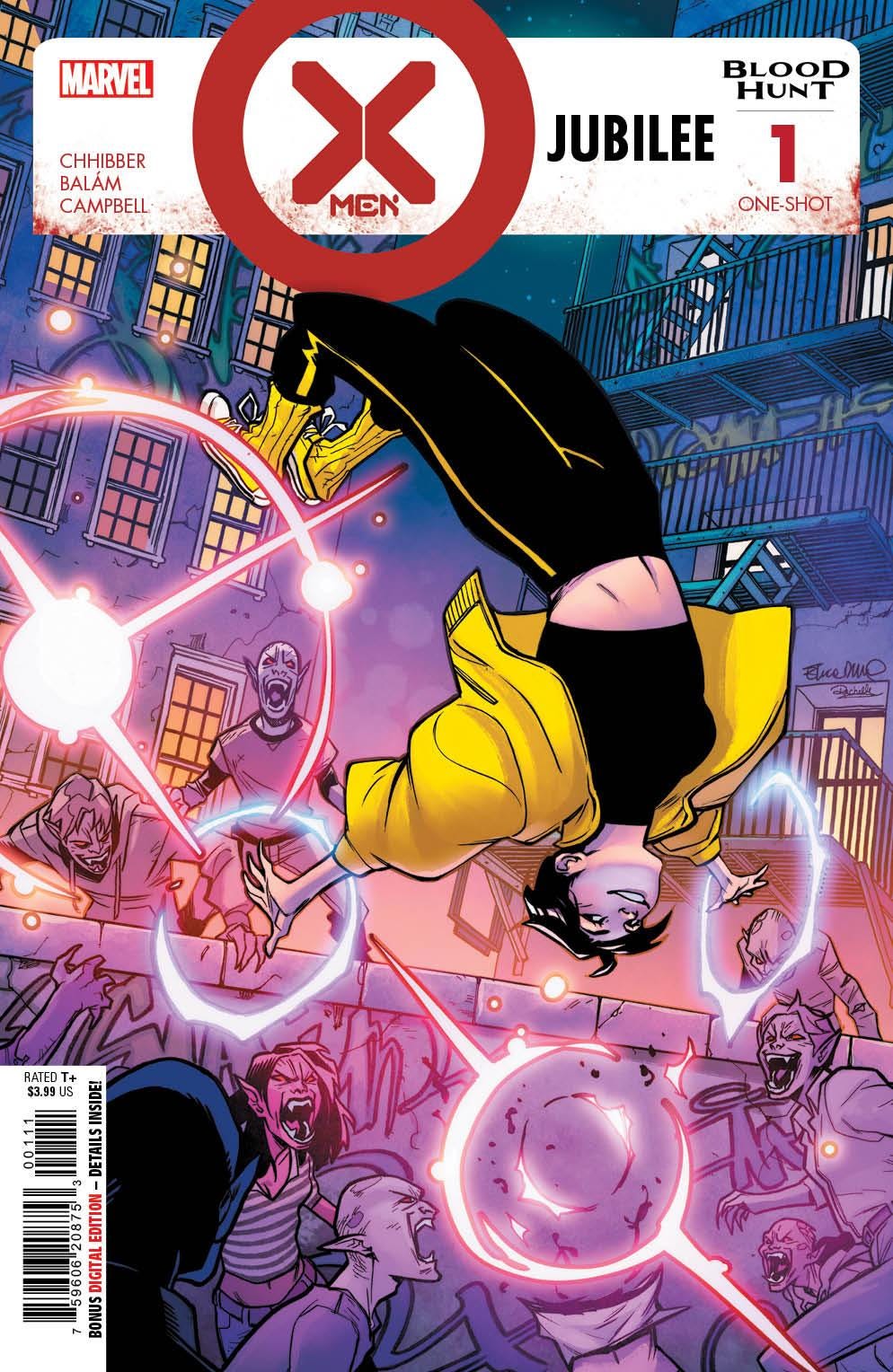
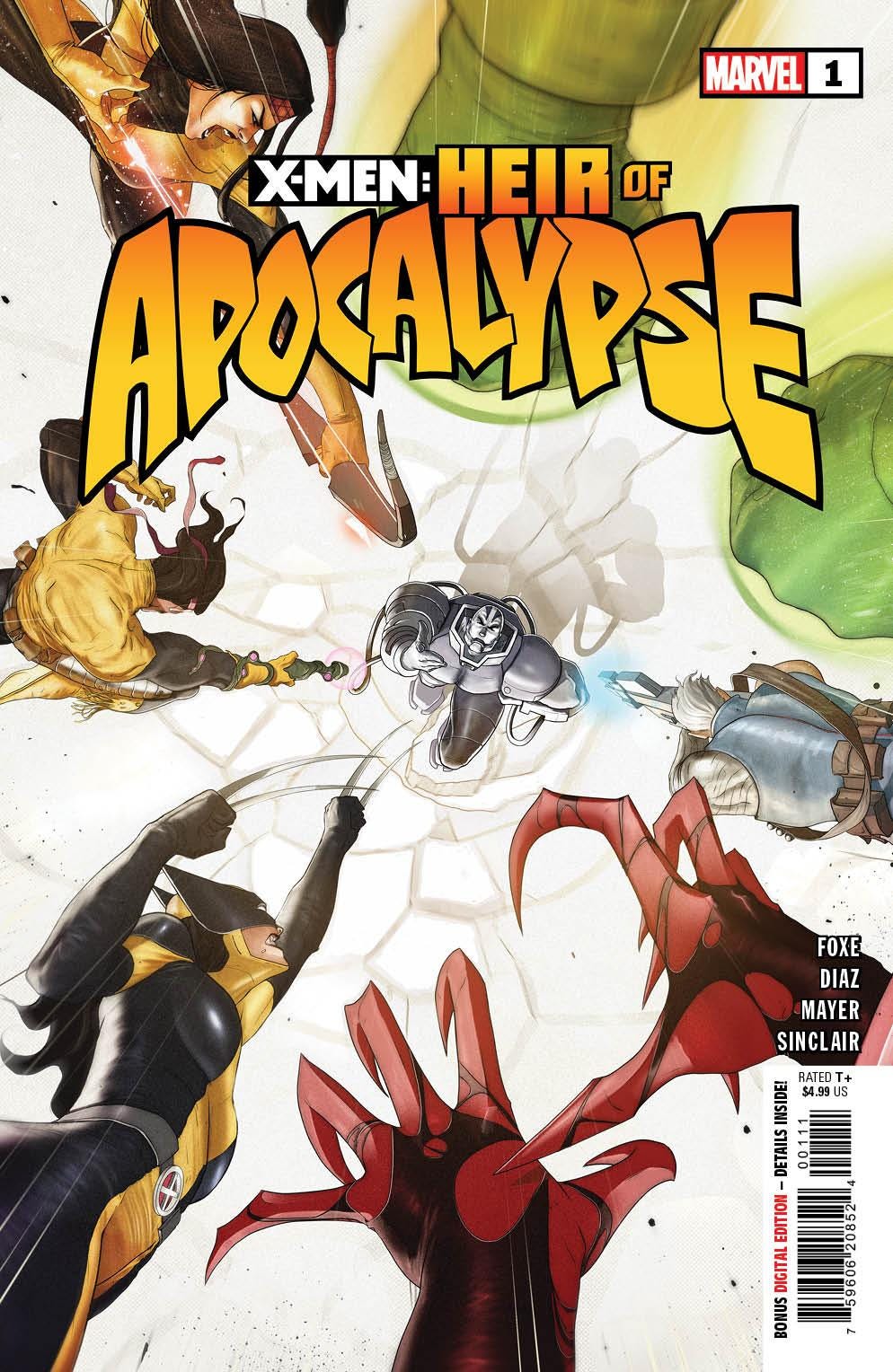
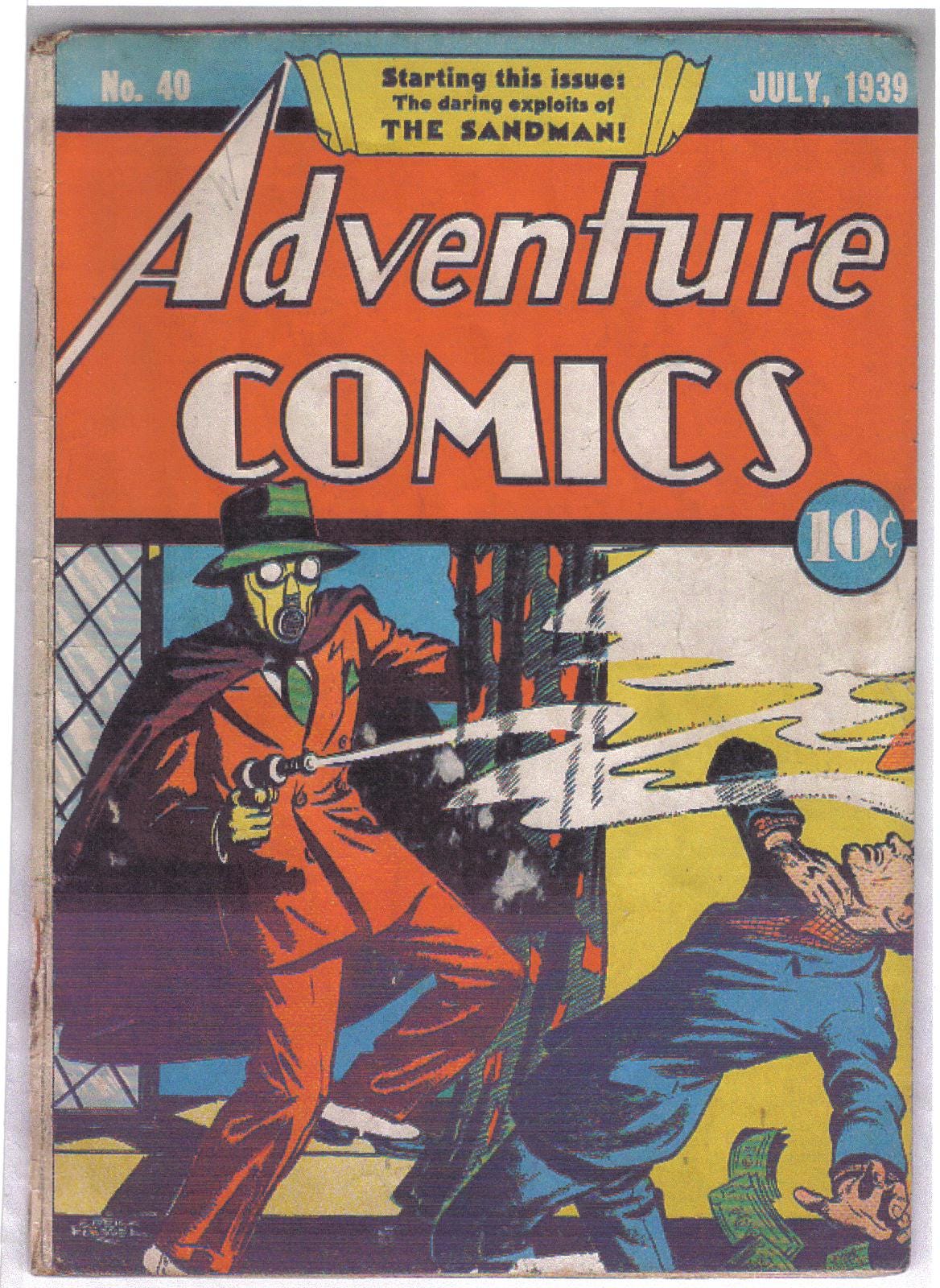
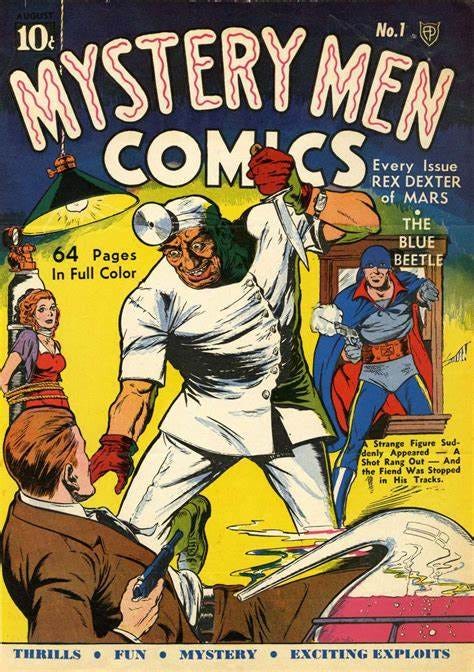
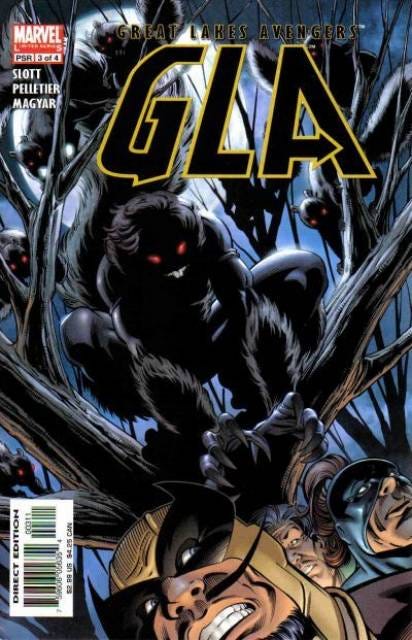
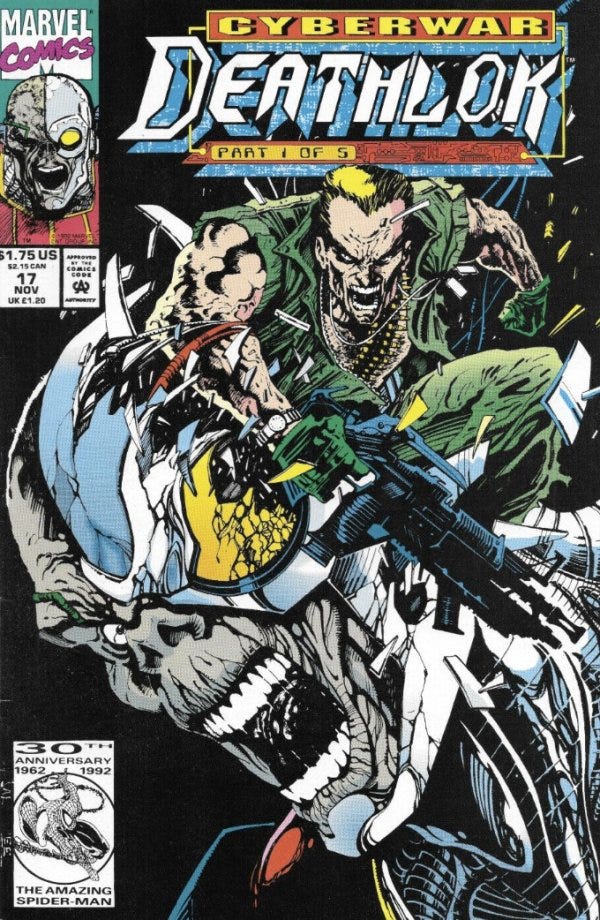



Always Never was a wonderful book. Glad you checked it out and enjoyed it!
You can post questions in the comment section to the latest release.